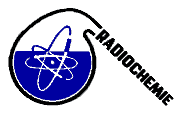Speaker
Ms
Inga Zinicovscaia
(Joint Institute for Nuclear Research)
Description
Indigenous bacteria can be successfully used to either detoxify or immobilize toxic heavy metals. These bacteria are under continuous investigation, and in-depth molecular understanding has been developed for some of them. However, up to date the dependence between the ability of bacteria to reduce or immobilize metals and their elemental compositions is not clear yet. For the first time epithermal neutron activation analysis method (ENAA) has been applied to determine the elemental content of bacteria before (control) and after exposure to different loadings of chromate. As a model, Cr(VI)-reducer bacteria of Arthrobacter genera, isolated from polluted basalts from both the Republic of Georgia and the USA, was used. Were determined concentration of elements: Na, Al, Cl, K, Fe, Co, Zn, As, Br, Rb, Sr, Sb, Ba, Th, U. In the cells treated with Cr(VI) significant alterations in the concentrations of some elements playing essential role in the life processes of microorganisms were observed. To understand the mechanisms of microbial resistance to Cr(VI) electron spin resonance (ESR) spectrometry was used to trace the formation and behaviour of chromium species (Cr(V)/Cr(III)) in bacterial cells.
The concentrations from 12 to 19 elements were determined in the bacterial cells.
Primary author
Ms
Inga Zinicovscaia
(Joint Institute for Nuclear Research)
Co-authors
Dr
E. Kirkesali
(Andronikashvili Institute of Physics, Tbilisi, Georgia)
Dr
L. Mosulishvili
(Andronikashvili Institute of Physics, Tbilisi, Georgia)
Dr
Marina Frontasyeva
(Joint Institute for Nuclera Research)
Dr
Nelly Tsibakhashvili
(Andronikashvili Institute of Physics, Tbilisi, Georgia)
Dr
S. Kerkenjia
(Andronikashvili Institute of Physics, Tbilisi, Georgia)
Dr
T. Kalabegishvili
(Andronikashvili Institute of Physics, Tbilisi, Georgia)

